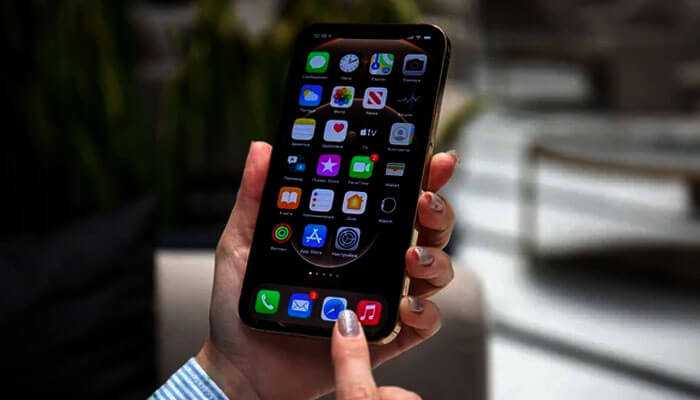Security stands as a paramount concern when it involves rendering web content within apps. iOS WebView Applications, a common feature in many apps for the iPhone, are used to display web content directly within an app. However, with the convenience it brings, there are some extra security considerations that developers must address.
WebView integrates web content directly into the application, exposing it to a range of web-based security threats, such as Cross-Site Scripting (XSS), which can lead to unauthorized access to user data and other breaches. Implementing WebView expands the app’s attack surface, as it combines both web and native app vulnerabilities. Furthermore, WebView often handles sensitive user data, necessitating security measures to ensure data privacy and compliance with data protection regulations.
Importantly, these security concerns are not just about protecting user data and ensuring a safe app experience. They also play a vital role in the App Store approval process. Apple’s App Store has stringent guidelines focusing on user privacy and data security. Apps using WebView are scrutinized to ensure they don’t pose risks to user security, such as data leaks or exposure to malicious content. Thus, addressing these concerns is essential not only for the safety of users but also for the successful submission and approval of your iOS WebView app in the App Store.
By implementing the following security measures concerning iOS WebView Applications, you can achieve the dual objective of enhancing the security of your product and increasing your odds of gaining approval on the Apple App Store.
Migrate from UIWebView to WKWebView
The first and most crucial step in enhancing the security of iOS WebView applications is migrating from UIWebView to WKWebView. This shift is not only a security enhancement but also a requirement for App Store approval.
Apple’s WKWebView component, which is based on the WebKit engine, provides enhanced security features compared to its predecessor, UIWebView. It offers out-of-process rendering, meaning that even if there’s a vulnerability within the web content, it’s less likely to affect the entire application. This isolation significantly reduces the risk of malicious attacks such as those involving memory corruption.
Moreover, Apple has deprecated UIWebView and strongly recommends migrating to WKWebView. As of April 2020, the App Store no longer accepts new apps that use UIWebView, and since December 2020, updates to existing apps using UIWebView are also not accepted. Migrating to WKWebView is thus not only a security measure but also a compliance requirement for your app to be listed on the App Store.
Mitigate Cross-Site Scripting (XSS)
XSS occurs when an attacker injects malicious scripts into web content viewed on a WebView, potentially compromising user data and app functionality.
Even though WKWebView offers better security features than UIWebView, it’s still crucial to address XSS risks. This is a concern in WKWebView when it renders user-generated content or content from untrusted sources. Securing WKWebView against XSS involves implementing robust content validation, sanitation, and potentially employing content security policies.
This is crucial for the security integrity of the application.
As Apple’s App Store review process heavily emphasizes user security, apps with unresolved XSS vulnerabilities in WKWebView could face rejection. So, ensuring that WKWebView components are secure from XSS attacks is vital not just for user safety but also for meeting the App Store’s stringent security criteria.
Ensure Secure Implementation of WebView
Apple’s guidelines for App Store submissions emphasize the importance of secure data transmission. During the review process, apps that use unsecured connections risk being rejected. To avoid this, it’s essential to ensure WKWebView is securely configured. This includes enforcing HTTPS for all web content to prevent unencrypted HTTP connections, which are vulnerable to interception and attacks during data transit.
When loading HTML content into WKWebView, especially from external sources, we must exercise control. This involves verifying the integrity of external JavaScript and rendering only trusted content. Content security policies can help to prevent the loading of malicious resources. Additionally, consider using subresource integrity checks to verify external content, ensuring that the content hasn’t been tampered with.
Users must properly handle and validate input to prevent injection attacks. This includes sanitizing data received from web pages before processing it in the app. As the App Store review process likely scrutinizes how an app loads and handles external web content, these secure content-loading practices can be a key factor in app approval.
Follow General Security Best Practices for iOS WebView Applications
Besides the above three security considerations, adhering to the following general security best practices in iOS WebView applications is also crucial for both enhancing app security and meeting Apple App Store guidelines:
1. Secure XML Processing:
Use secure libraries like libXML2 for XML processing to guard against XML injection attacks. Use secure and up-to-date XML parsers to avoid potential security vulnerabilities.
2. Avoid Vulnerable C Functions:
Coding in Objective-C, a language used extensively for iOS WebView Applications that is a superset of C, inherits certain vulnerabilities from its C functions. Avoid using functions known to be vulnerable to injection, such as strcat, strcpy, and sprintf, opting for safer alternatives.
3. Client-side and Server-side Validations:
Both client-side and server-side validations are important for a robust security posture. The client-side validation acts as a first line of defense against incorrect or malicious input, while the server-side validation serves as the final check before processing or storing data.
4. Regular Security Audits and Updates:
Conduct regular security audits and release app updates to patch vulnerabilities.
5. Use of Modern, Secure Coding Practices:
Employ modern and secure coding practices, such as using safe functions and avoiding deprecated methods. Apple emphasizes the use of current and secure coding standards.
Wrapping Up
To sum up, while WebView functionality brings significant benefits to iOS WebView Applications, it also introduces substantial security challenges. Navigating these security concerns is a multifaceted process that is crucial for both the security of the app and its acceptance on the Apple App Store.
These measures ensure a secure app and trustworthy environment for users, and a smooth App Store review process.




